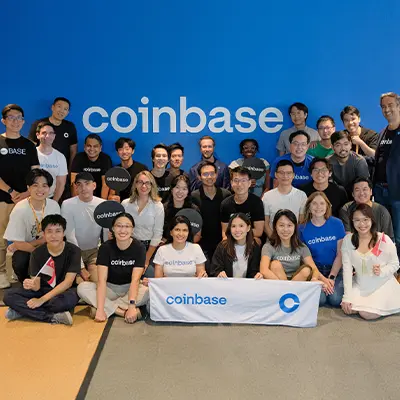Firms should also consider widening their nets and hiring based on a candidate’s potential value-add, not technical background. I’ve noticed that for many US tech companies, soft skills like the willingness to learn, enthusiasm, and an
innovative mindset are prioritised, as these are sometimes more essential to building a good team. Hard skills, on the other hand, can always be acquired through on-the-job training.
For example, firms I have worked with have shared that graduates in psychology can be valuable to user experience (UX) and user interface (UI) design, despite lacking traditional technical training in these areas, as they better understand user behaviour and thought patterns.
2. Make sure the pace of hiring reflects your firm’s digital edge
Technology is constantly evolving, with the pace of change accelerating. Apart from innovating new products and services and investing in their employees to stay on top, tech companies need to ensure that company processes are equally efficient.
Firms that take too long to hire lose out on the best candidates. I once came across a firm that took eight to ten weeks – sometimes more – just to release an offer. You can only imagine how long the interview and screening process was before that. Even big, brand-name tech companies are guilty of making this mistake.
The hiring process is an important reflection of company culture, and tech candidates expect it to mirror the speed at which things happen in the firm. Streamline the recruitment process and act quickly to avoid losing the best candidates.
3. Understand that tech employees enjoy innovative disruption – so create a work environment that encourages that.
A third factor that companies tend to forget is that in today’s talent crunch, focusing on the people, rather than the products they create, is key.
For many of today’s younger workers, work has to be meaningful as well as rewarding. A work environment that is less rigid enhances personal and professional development.
At the same time, top tech employees disrupt and break boundaries. They think out of the box, and do not adhere to conventional methods of doing things. A work environment that encourages this flexibility tends to attract like-minded talent.
For example, Google has long encouraged its employees to devote 20 per cent of their time to passion projects. Gmail, Google Maps, Twitter, Slack, and Groupon all started as side projects. It is one reason why Google remains one of the most innovative companies in the world, and one of the most sought-after employers.
To this end, it pays to invest continually in upskilling your staff. Ensuring that your employees are equipped to handle the most cutting edge technology is good for business, but has the added advantage of keeping them engaged in their work.
This is important because I’ve noticed that the tech industry attracts a particular personality type – the tech talent I’ve worked with tend to be excited about change and keen to improve, paralleling the quick advancement of technology. Investing in training and mentorship, and offering opportunities to learn new skills, show your firm’s commitment to providing an upward career trajectory for your employees.
The IBM Skills Academy in Singapore is a good example. It offers training to those keen to bridge their digital skills gap and stand out from the competition. It adopts IBM’s training, digital learning assets, and certification to equip people with skills in new, emerging technology in cloud, data, or cyber security.
4. Help yourself, help the ecosystem – your recruitment strategy can develop regional tech talent.
Hiring foreign experts on a contract basis to train up a local team is a strategy increasingly used by tech firms in the region, and has been helpful in developing a good base of tech talent here.
Offshoring some tech aspects of a business to other parts of the region has also resulted in regional specialisation, with some countries building a competitive advantage in particular tech skillsets. For instance, Vietnamese coders are rapidly emerging as one of the top coders in the world.
Apart from developing local tech skills, many countries are also investing in returning talent to the region. Southeast Asian talents who have worked in Silicon Valley in key positions are invited to bring their tech expertise home, to contribute to the regional tech boom.
Singapore is no different. For instance, at Robert Walters, we started a Balik Kampung (Malay for ‘come home’) campaign in 2014 to help overseas Singaporeans secure a job back home, especially in the technology and banking sectors to fulfil the shortage of such talent in the market.
Companies attracting returning talent to fill key roles in their team are not only building a better tech team for their business – they are part of the solution to creating a robust tech talent ecosystem in the region.
Southeast Asia: A region brimming with potential
With tech sweeping across Southeast Asia and changing the way people work, play, and communicate, developing a pool of tech talent to support this phenomenon has become a concerted effort across stakeholders.
The talent crunch in tech is a reality, and it shows no signs of abating. To cope with the competition for the best and brightest, companies need to stay nimble, quick, and responsive. That's the best way to ensure that your pipeline for talent stays running in Southeast Asia.









